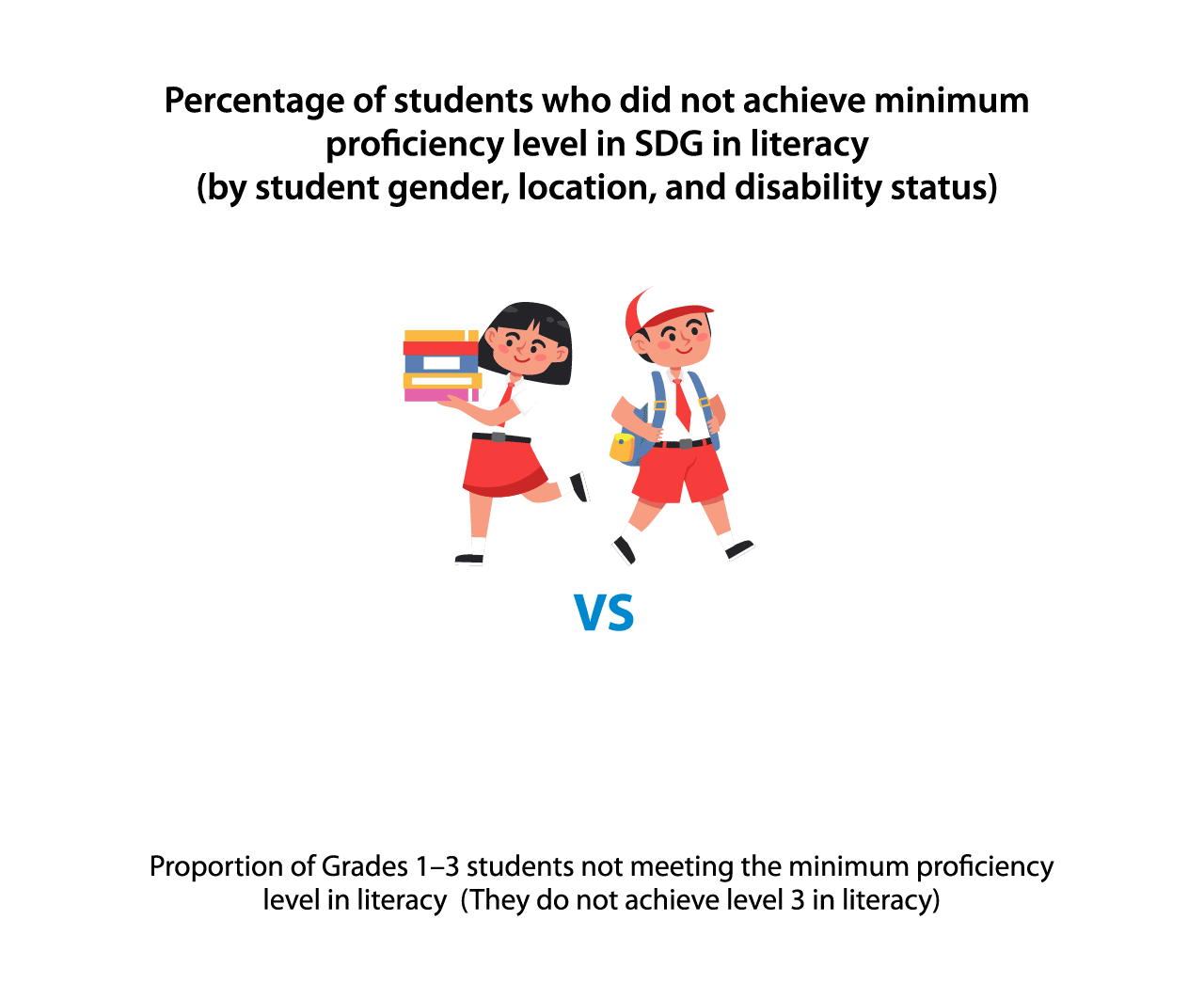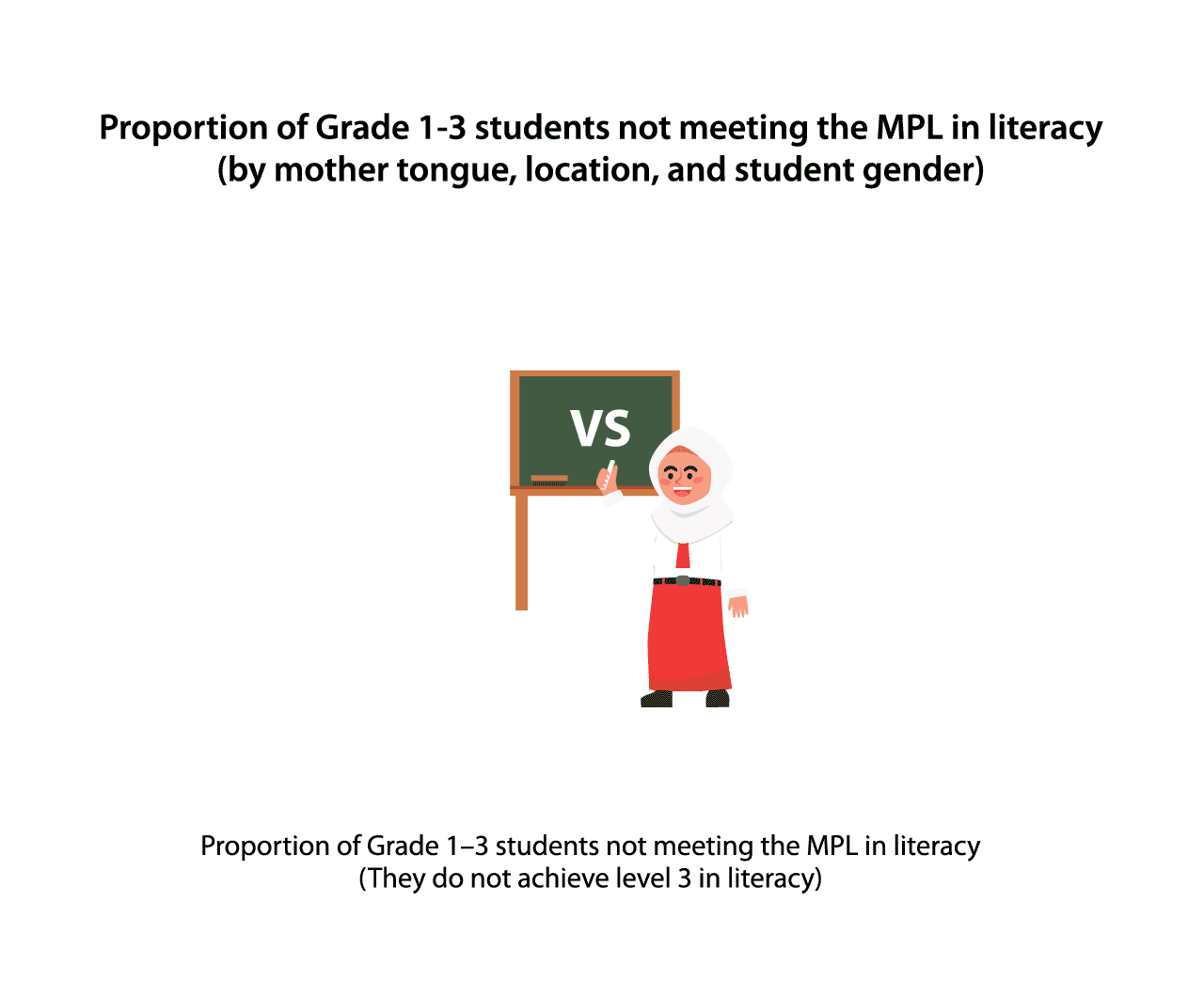According to recent findings in Build Back Stronger: Postpandemic Learning Recovery after the Pandemic, the answer is “yes”. But it’s not all good news.
In Indonesia, a large proportion of students have not yet met the learning standards, both at the national and global levels, according to a study by INOVASI (Indonesia and Australia Partnership Program), the Minister of Education, Culture, Research, and Technology (MoECRT) and the Australian Council of Education Research (ACER).
This comprehensive study encompassed 18,370 students in 20 districts across Indonesia and captured a wide snapshot of learning outcomes during the COVID-19 pandemic and the impacts of external factors such as student characteristic, family, school, and learning environment.
Findings indicated a concerning trend; one out of two students, had not achieved the minimum proficiency level for literacy. Even more alarming, two out of three students fall short of the minimum proficiency level for numeracy.
To gain a more detailed insight into student learning trajectories before, during, and postpandemic, a focused subsample of 4,103 children from 69 schools across seven districts was analysed before the pandemic (2020), one year into it (2021), and two years on (2022).
While shutdowns and mandates undoubtably saved lives, school closures and limited online resources amongst other factors, resulted in significant setbacks to children’s learning. In just one year of school closure, students experienced the equivalent of six months of learning loss for literacy (or equivalent to 0.47 standard deviation/sd) and five months of learning loss for numeracy (or equivalent to 0.44sd).
Student learning loss after one year of school closures during the pandemic
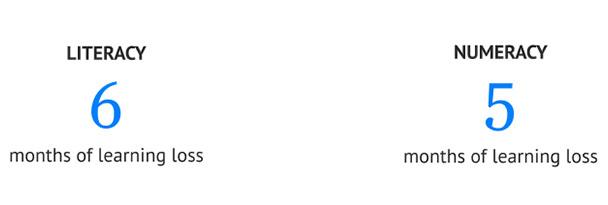
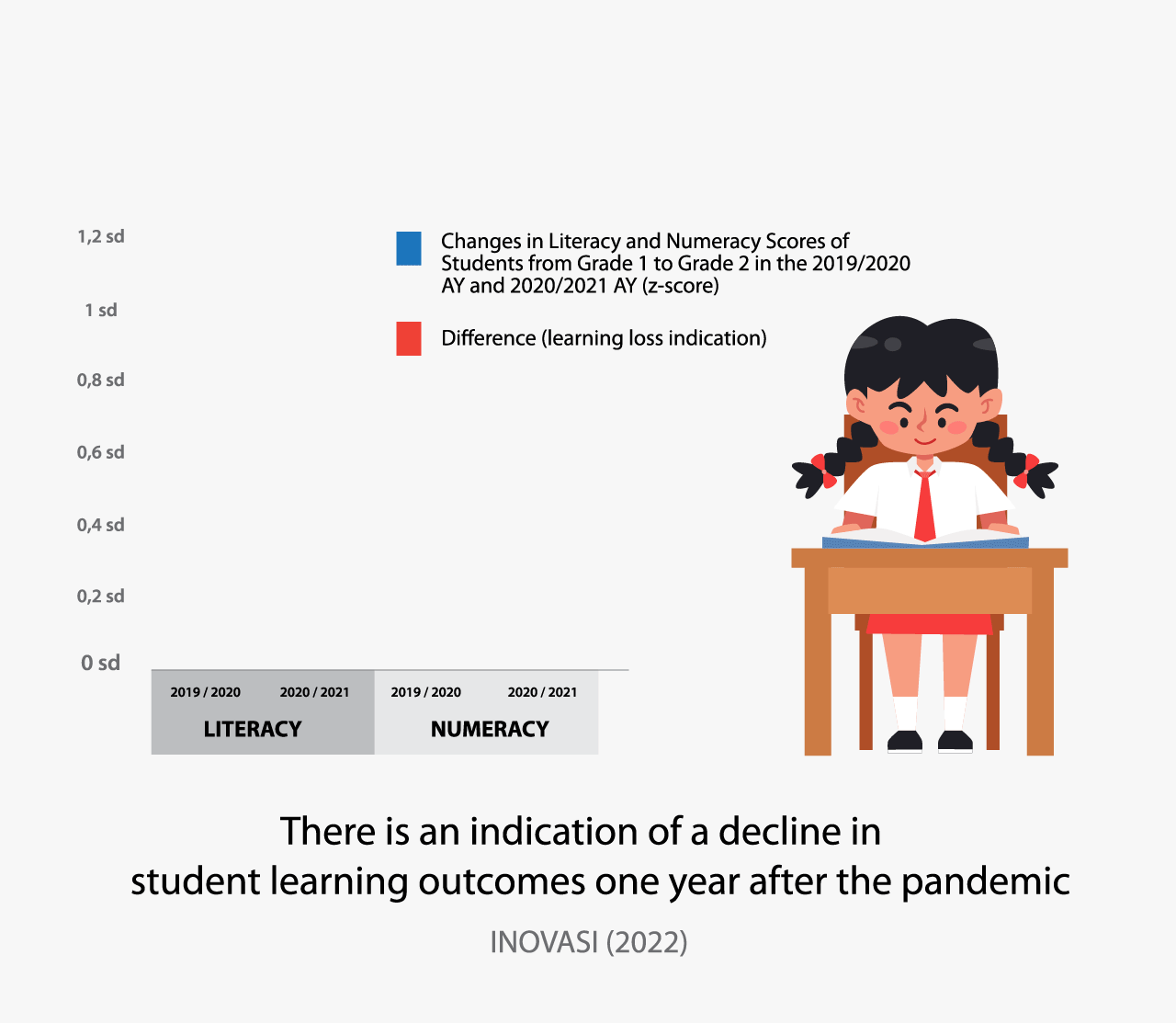
This study provides insights into potential learning losses and found evidence of learning recoveries. Several factors are believed to contribute to this learning recovery, including student-centered learning and a focus on basic skills. This aspect aligns with the key characteristics of the Kurikulum Merdeka.
The learning gap
In numeracy, this study found that in the academic year 2020/2021, 78 percent of grade 1 students did not meet the expected standards, and 99 percent of -grade 3 students were not at the expected level. In literacy, 71 percent of grade 2 students had not met the standards, and by grade 3, there were 98 percent of students who had not met the standards.
These results indicate that if students are not able to master basic skills in the early grades, they will progressively fall behind as they advance to higher grades.
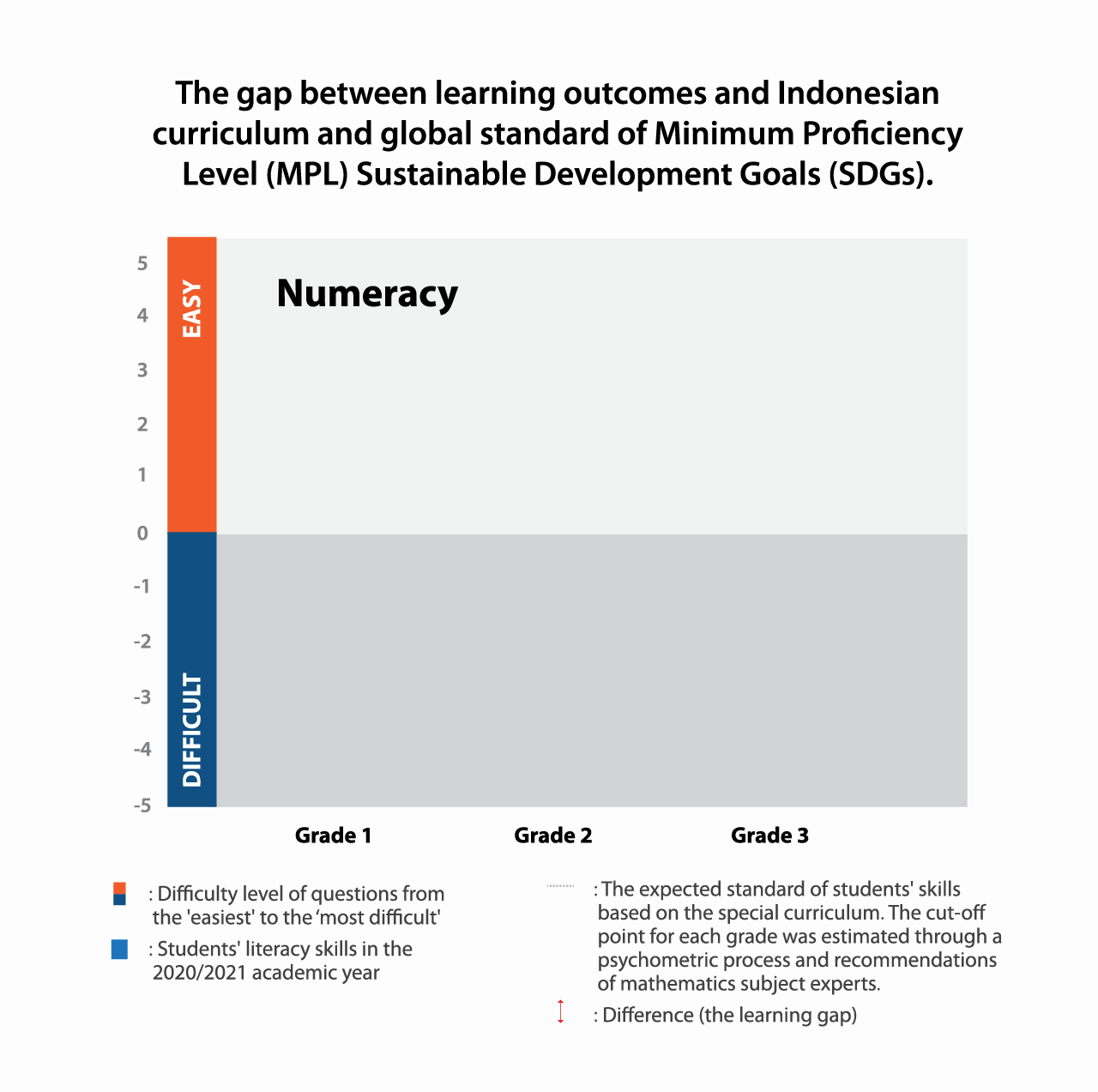
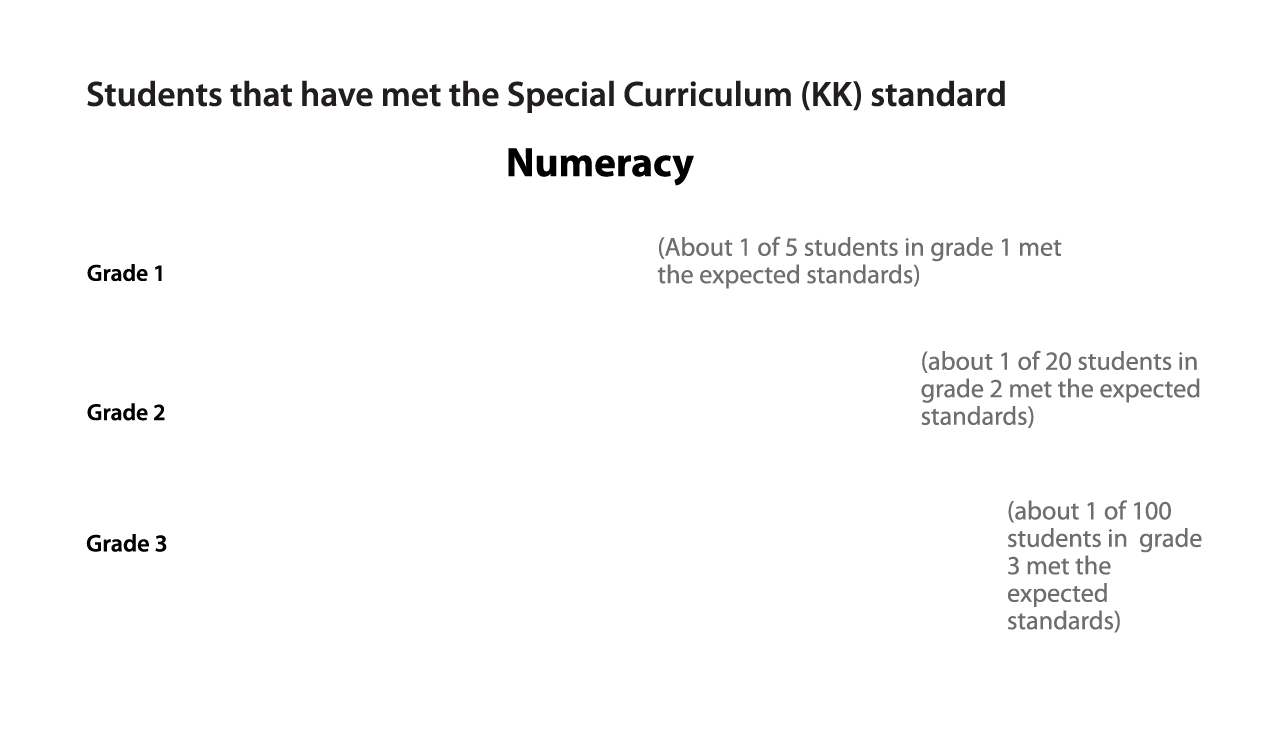
The Special Curriculum (or commonly referred to as emergency curriculum) is a curriculum issued by the Ministry of Education, Culture, Research, and Technology (MoECRT), which provides flexibility for educational units to determine the curriculum according to the learning needs of students during a pandemic.
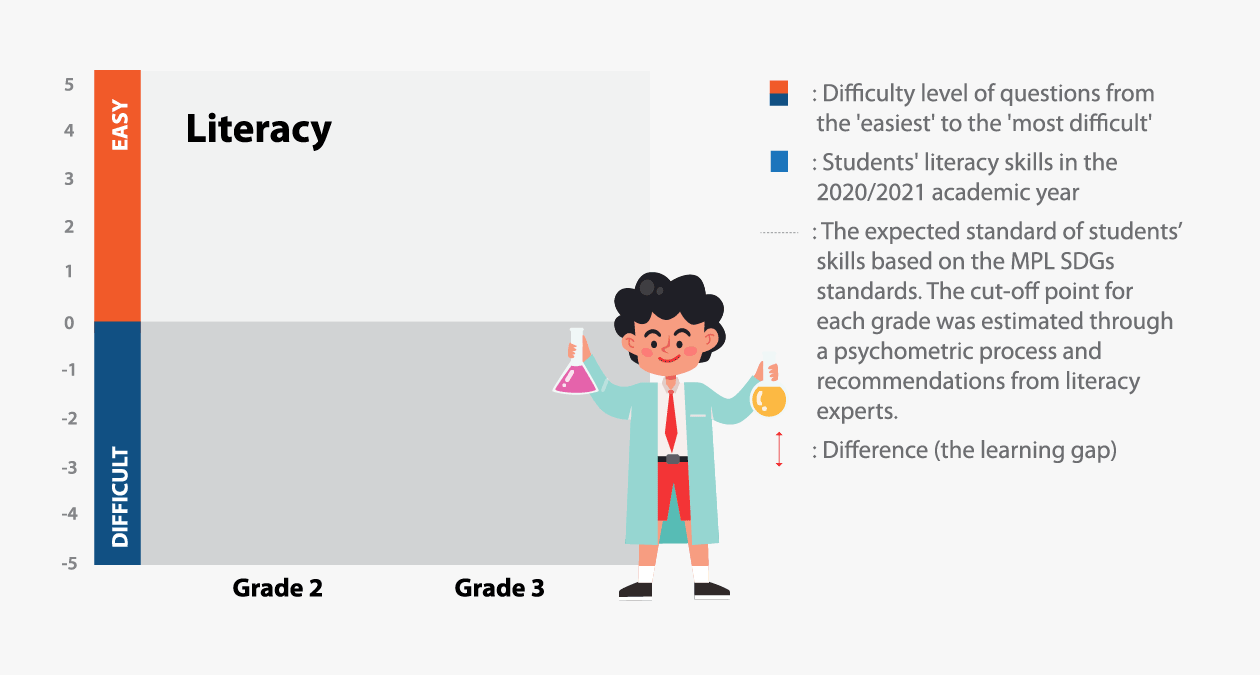
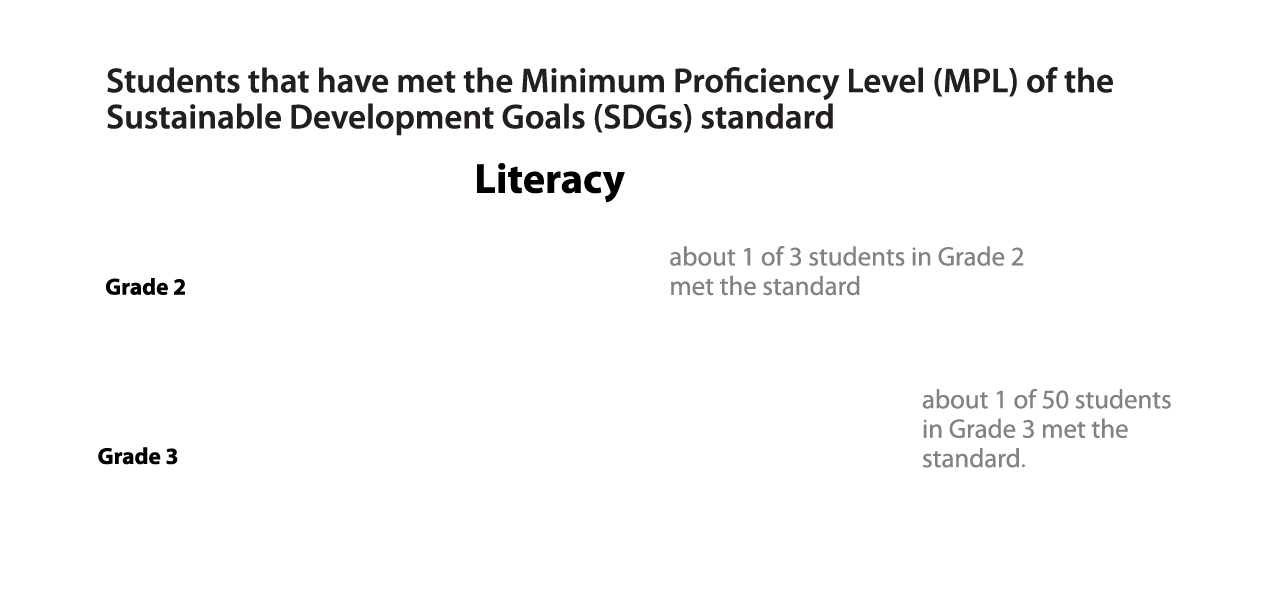
A curriculum that moves too fast, risks losing the attention of students and they will fall further and further behind. In Indonesia, Year 1 students are expected to be able to calculate additions up to 20 according to the 2013 curriculum, although this competency isn’t mastered until Grade 2 in the global Sustainable Development Goals standard. Grade 3 students in Indonesia need to describe and determine the relationship between standardized units (eg, kg, g, m, and cm) while internationally this competency needs to be mastered by Grade 6.
Basic skills acquired early on, such as literacy and numeracy, are essential for students to delve into more complex knowledge and skills. The inability to meet these basic skills can limit students’ potential for critical thinking, problem-solving, and innovation. The research showed that it would take around 14 months for grade 1 students to reach the expected competency level, with learning outcomes gaps likely to increase exponentially over time.
Education has not benefited all students equally
Imagine a group of children lining up for balap karung races, excited to jump their way to the finish line. They all have to race an equal 50 metres, but while some children have a clear path ahead of them, others have hurdles blocking their way. Some children will be more successful, and others will lag behind. Just like at school.
Students with a disabilities, those from low socio-economically disadvantaged backgrounds, those with parents of low educational levels, those living in remote areas, and those not proficient in the Indonesian language are the most vulnerable groups when compared to others, and they face significant learning loss.
Nine out of ten students with disabilities living in rural areas did not meet literacy standards. Student who are not yet fluent in the Indonesian language are also disadvantaged. 81 per cent of boys and 71 per cent of girls who are not yet fluent in the Indonesian language and lived in rural areas did not meet the literacy standard.
Of the entire sample, female students and male students who did not meet the standards reached 59 percent and 69 percent respectively.
Before and after the pandemic, the learning outcomes of female students were higher to those of male students. However, female students experienced greater learning loss as they were generally given more domestic tasks and consequently had less time to study.
Learning recovery
In addition to findings regarding learning loss, this study also found promising signs of learning recovery, equivalent to two months of learning (or 0.16 sd for literacy and 0.12 sd for numeracy) two years after the pandemic.
The study’s findings indicate an improvement equivalent to four months of learning for students whose teachers made curriculum adjustments during the pandemic. Teacher-initiated curriculum adjustments typically focused on basic literacy and numeracy skills. For instance, in terms of literacy skills, teachers concentrated on teaching children letter recognition, syllables, and words as an initial foundation for students to become fluent readers.
Learning adaptations were also carried out by teachers either independently or by referring to the Kurikulum Darurat, which is the simplified Kurikulum 2013 provided by the government. Diagnostic assessment and differentiated teaching which considers the different abilities of students, also had a positive influence on the rate of learning recovery.
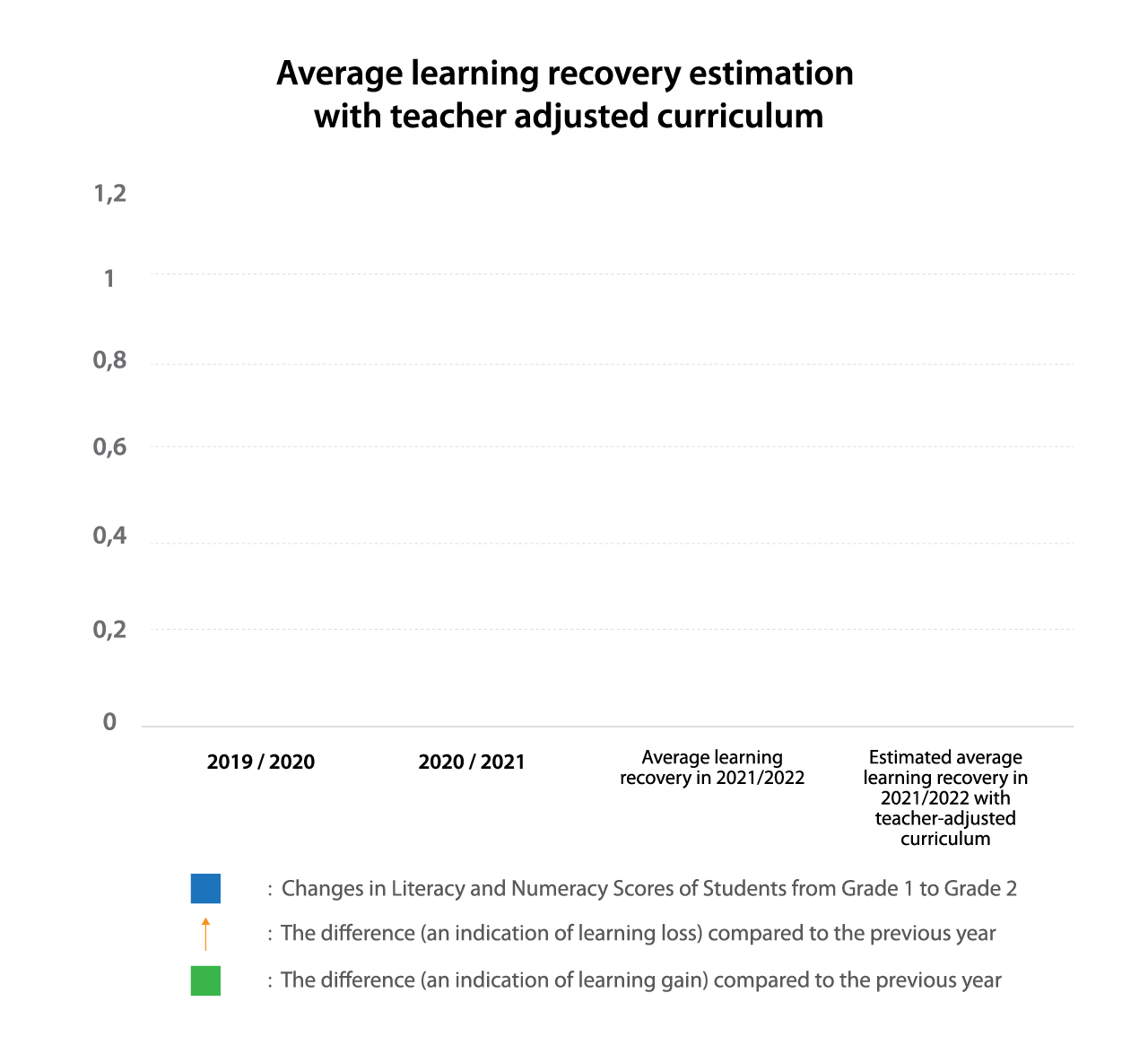
In addition to teacher factors, school leadership and government support are key factors in the learning recovery. School principals who conducted periodic monitoring of teachers and utilized the data, accelerated learning recovery by five months. Schools which received support from the central and regional government in the form of distance learning support equipment increased learning recovery by three months.
Hope for Indonesia’s educational future
Findings from the study have informed the government’s approach to learning recovery. Minister Nadiem Anwar Makarim presented the study to the House of Representatives and gained support for the Kurikulum Merdeka, which has been implemented as learning recovery options since 2022.
Ahead of the National elections in 2024, ensuring the sustainability of its comprehensive reforms is paramount. While the Covid-19 pandemic is no longer a public health emergency of national and international concern, a long-lasting learning crisis still remains. But evidence from this study shows that there are grounds for hope.
Accelerated learning recovery is expected to be achieved with a flexible curriculum focusing on literacy and numeracy competencies, and student-centered learning incorporating assessment and differentiated learning.
The following recommendations are in line with the characteristics of Kurikulum Merdeka (Emancipated Curriculum).
(Infografis_PMM.pdf (kemdikbud.go.id);
https://kurikulum.kemdikbud.go.id/kurikulum-merdeka/ ).


*This article is a publication of a study conducted by INOVASI.
